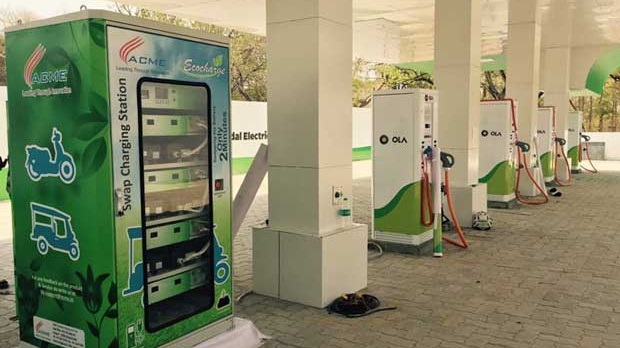India to roll out EV battery swapping policy soon - Will EVs get cheaper?
Niti Aayog at it

In the recent budget announcement, the government had said that it had plans to introduce a national battery swapping policy for electric vehicles. "Considering space constraints in urban areas in terms of setting up charging stations, a battery swapping policy will be rolled out soon and interoperability standards will be formulated," the finance minister had said.
Following that, Niti Aayog has been holding meetings with various stakeholders in the EV ecosystem. Now, the government policy think-tank is expected to roll out the EV battery swapping policy in 3 or 4 months time, and this in turn is can bring down the cost of EVs and improve their adoption in the country.
The government is hoping to mainstream electric mobility by providing for battery swapping policy, special mobility zones for EVs, augmenting charging infrastructure, ratifying building by-laws, cleantech in public transport and much more. The government’s push for electric vehicles also fits into the larger scheme of combating carbon emissions.
For the record, India’s electric vehicle market is expected to reach $150 billion by 2030. According to the Ministry of Road Transport and Highways, India has 9,74,313 registered electric vehicles (numbers at the end of last month).
- Hero MotoCorp, BPCL partner to set up charging infra for EVs
- India sees electric vehicles register record numbers
- MG teases new MG4 electric hatchback - Will it launch in India?
But what is battery swapping?
Niti Aayog's EV battery swapping policy is expected to provide charging solutions to those with space shortages, while the interoperability standards will provide certainty to EV manufacturers and investors looking to build charging stations.
Battery swapping, by the way, is simply replacing a depleted battery with a fully charged one at a battery swapping station, which are similar to 'petrol bunks'. This technology is set to transform the EV space as it reduces infrastructure cost and is a more efficient charging arrangement for vehicles ‘on the go’.
This technology also tackles the challenge of frequently purchasing new battery packs making EV more economically viable. BaaS (battery as a service) maximizes asset utilization. In the Indian EV ecosystem, many tech start-ups are working towards perfecting the swapping technology. In all, it is expected to bring down the cost of the EVs.
Get daily insight, inspiration and deals in your inbox
Sign up for breaking news, reviews, opinion, top tech deals, and more.
Aside from battery swapping policy, Niti Aayog has also given a proposal to bring institutional lending to purchase electric vehicles under the priority sector ambit. Simply put, this means banks loans for buying electric vehicles could become cheaper. As of now, the loans are extended under auto retail category --- among the high interest categories in India.
Niti Aayog had said banks and non-banking financial companies (NBFCs) can achieve an EV financing market size of Rs 40,000 crore ($5 bn) by 2025 and Rs 3.7 lakh crore ($50 bn) by 2030.
In a report in the Economic Times, the Niti Aayog chief executive Amitabh Kant was quoted as saying: "I am confident that electric vehicles will be cheaper than ICE engine vehicles in the near future".
Want to know about the latest happenings in tech? Follow TechRadar India on Twitter, Facebook and Instagram!

Over three decades as a journalist covering current affairs, politics, sports and now technology. Former Editor of News Today, writer of humour columns across publications and a hardcore cricket and cinema enthusiast. He writes about technology trends and suggest movies and shows to watch on OTT platforms.